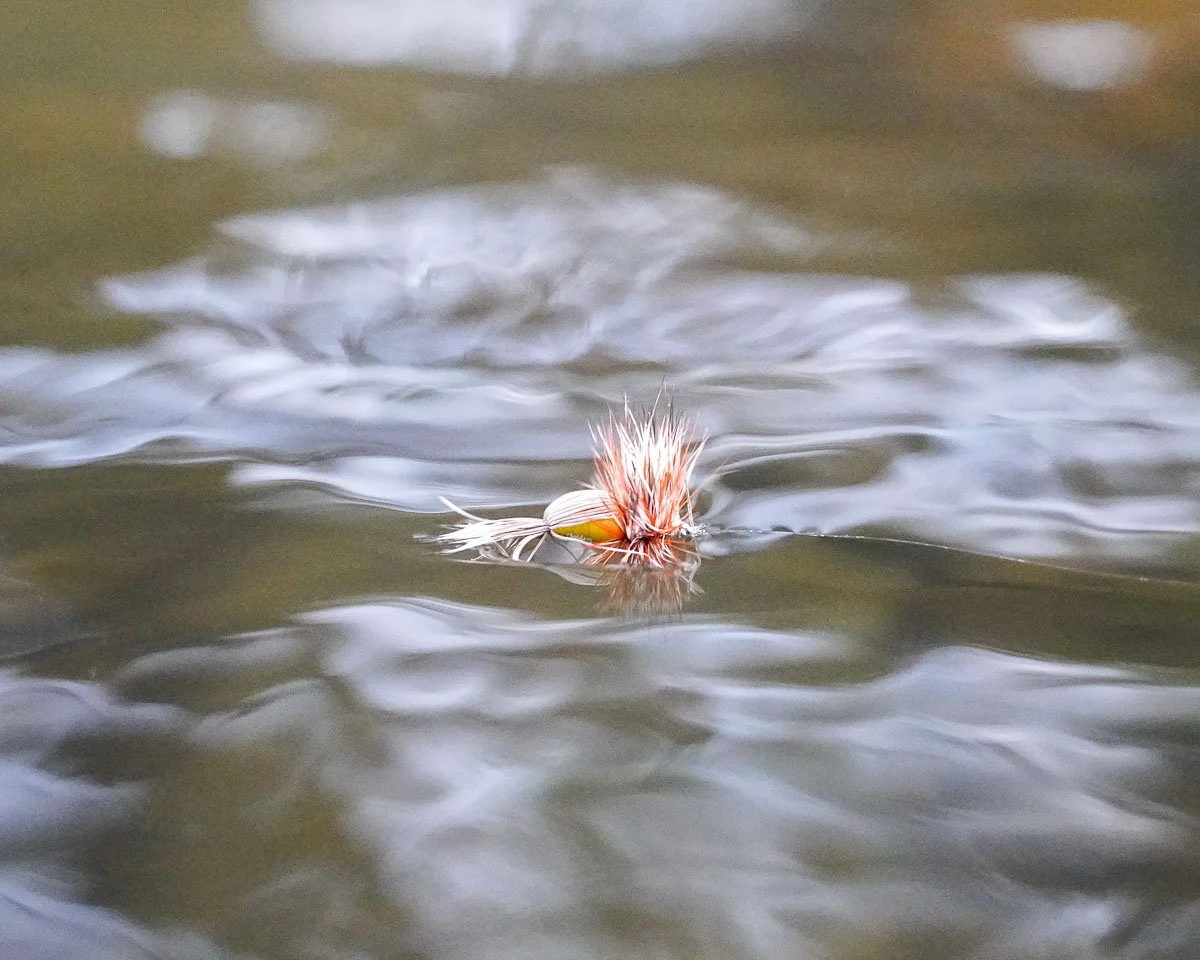5 best flies for summer
Everything in life is subject to favouritism, fly fishing perhaps even more than most. This was the idea we unpacked recently in Favoured Feathers, with our friends over at Tom’s Outdoors.
In the wash up we decided to put together a list of the Best Summer Flies for Australia. What a stupid idea.
Not only are the concepts ‘best’, ‘summer’ and ‘Australia’ too broad to unpack (giving rise to obvious questions like ‘for what species’, ‘on what type of water’, ‘at what time of day’ and ‘in which region’), but such things are deeply prone to opinion.
As such, presented below are my favourite five flies to fish over summer.
Parachute Adams
If you’ve watched our recent film you’ll know this is my favourite. Having had plenty of chance to reflect recently, I think it is more because of what this fly represents than what it actually is. Normally a para-adams is selected when fish are already looking up. It is less likely than other dry flies to have a nymph dangling below it, as it can easily be sunk, especially in moving water. As such, it isn’t a favourite in the sense that it’s a go-to fly choice. Rather, it's a classic for tricky fish, clear water, or matching a hatch – all things we anglers tend to get excited about.
The String Thing
A triumph of simplicity, and a two fingered salute to the brandy sipping traditionalists, the String Thing is super effective, easy to fish, and versatile. It is also an excellent introduction to the joy of tying, fishing, and catching fish on your own flies. A variation on the soft hackle theme, it employs some fine brown shoe lace or light string as the body, copper wire wrap, and if you wish, some light hackle. In sizes 12 or 14, it impersonates most offerings on the trout smorgasbord. All said, heaps of stuff that fish eat is brown, buggy, and a couple of centimetres long. Sometimes a more nuanced approach than that is needed, but often it isn’t. The String Thing can be fished unweighted just below the surface, or deeper with a bead added. I’ve even had it eaten when it’s been held up in surface film. Bead or not, with or without hackle, this is fast becoming a staple for me.
Foam pontoons
Despite having passed many a snobby comment about foam filled grass hopper patterns, having fish come up and smoke a fly that has the surface area of a small moon is heaps of fun. Being easy to see and buoyant, they tend to excel in fast water. For sure, more likely to be employed on the bumbling, rainbow filled waters around Canberra than on the thesis writing fish of the Western Lakes, but still an excellent choice in the right conditions. Big hoppers also have the benefit of being able to hold up nymphs that tip the scales alongside the New Zealand forward pack, which can be useful when one wants an indicator with a hook in it. At least if you don’t tempt a fish, you will annoy one.
Royal Humpy
A boring choice, but one that should be on the list. The Humpy is truly the go to or starting fly for most of the situations I find myself in. A bit more subtle than entry #3, but still with the ability to be effective in combination with a nymph, this is probably my most fished dry fly. I use 12s and 14s most, but sometimes go as far as a size 10.
Dark Pheasants Tail Varieties
Another less than shocking addition to the list, but probably the fly that I’ve had eaten the most since my move to the mainland (not that it isn’t useful in Tassie also). As a general rule, I find smaller variants with a tungsten head most useful. Often a bright metallic bead can replace the need for flashback. Glass beaded varieties are great for shallower water.
So there it is. I could probably go a summer period with nothing else, and do just as well (or poorly) as I otherwise would have. But such is the nature of favourites: when they work we feel affirmed. When they don’t, we tend to be forgetful.










